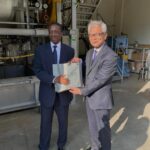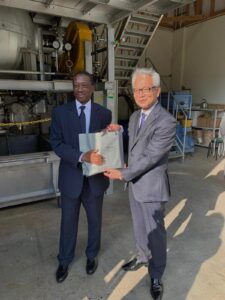Why is the Macro-EHP one of the best technologies for alleviating the UN SDGs?
Out of the 17 goals, the MACRO-EHP has 8 of them covered.
In 2015, the United Nations (UN) introduced 17 Sustainable Development Goals (SDGs) to transform the world. These global goals center on dignity, people, the environment, partnerships, justice, and prosperity. According to the UN, these are aimed at 2030.
To ensure the realization of these goals, we introduced technologies that can correlate with them. In 2018 (3 years after the pronouncement of the SDGs), we established one of the sustainable waste management systems—the MACRO-EHP. A technology aimed at turning waste into wealth through its efficiency, environmentally friendly, and safe ways of treating waste into a new raw material to curb some of the challenges in the world. Since then, it has been four years down the road; here is the list of the features of the MACRO-EHP that have contributed significantly to achieving the SDGs.
 1. No Poverty
1. No Poverty
With the UN`s aim of ending poverty in the world by 2030, we hope that our technology can, directly and indirectly, circularly create jobs. For example, waste collection, sorting, recycling, driving, managing, accounting, Etc., are made in the waste management industry. Moreover, many waste management companies collect solid municipal and household waste with trucks and transport it to landfills or disposable centers. Therefore, with the rapidly increasing population in proportion to the waste, many jobs are created (both full-time and part-time) if a single MACRO-EHP plant is installed, thereby reducing poverty.
2. Zero hunger
The UN wants to end hunger and ensure healthy and sufficient food access to all people by 2030. Using our MACRO-EHP, we can produce quick and high-yield organic fertilizers both in a liquid and solid state. Produced fertilizers help to create faster plant growth and a high agricultural yield. Within less than an hour, organic waste from our technology is a good source of nutrients for plants and a good soil structure essential for plant growth. Therefore, an increase in plant growth will directly reduce hunger worldwide.
3. Good health and well-being
The UN SDG 3.9 aims to substantially reduce the number of deaths and illnesses arising from chemicals, air, water, and soil pollution and contamination. Our technology can treat hazardous waste and kill all viruses, such as avian influenza and other contaminations. Also, there is an overall waste reduction in the environment. For example, for household waste with a specific gravity of 0.2, the volume reduction rate is about 70% contributing to a healthy environment.
7. Affordable and clean energy
Some of the end products from the MACRO-EHP can be used as raw materials for charcoal briquettes to substitute charcoal and wood chips produced by deforestation once the pellets are used to generate electricity under a biomass boiler. Surprisingly, the processing cost is roughly 7 cents per kg of waste. Moreover, processing waste with this technology generates less CO2 and Dioxins than other treatment methods.
 9. Industry, innovation, and infrastructure
9. Industry, innovation, and infrastructure
While the UN aims at upgrading infrastructure and sustaining other industries, The MACRO-EHP is a waste-to-wealth recovery system that turns waste into raw materials for different industries. For example, depending on the waste composition, the end products can act as compost, animal feeds to support the agricultural sector, or the production of charcoal briquettes for the energy industry. Also, establishing the MACRO-EHP will require a supply-chain packaging line, constructing proper roads for waste collection, Etc. Therefore, the availability of the technology itself will boost the growth of other industries such as agriculture, energy, eco-tourism, and the environment to support one another, contributing to development, especially for developing countries.
11. Sustainable cities and communities
Research shows that 55%of the world’s population lives in urban areas. With such an increasing population and emerging cities, there is increased pollution and waste generation, which affects the environment. Contrarily, the MACRO-EHP deals more with municipal solid waste, reducing CO2 emissions and energy, and boosting agriculture, creating a safe and sustainable city for the population.
13. Climate action
Increased pollution from emerging industries, poor waste management systems, and human activities have led to climate change. For example, when processing waste, landfills lead to further generation of greenhouse gases (GHGs) like methane, whereas incineration produces a lot of CO2, which causes global warming. On the other hand, unlike other waste management methods such as landfills or incineration, the MACRO-EHP ensures a safe and reliable treatment of many kinds of waste using water. Therefore the MACRO-EHP remains the ideal solution to addressing global climate change.
15. Life on land
The bi-products from the MACRO-EHP can be used to ensure life on land. For example, it provides restoration of formally poor soils to favorable soils for farming and restores degraded areas to enable afforestation. Also, waste that previously affected water streams, wetlands, or drainage channels is processed through proper waste management systems. Hence, in the long run, the existence of the MACRO-EHP technology protects and prevents the extinction of threatened species.
The UN SDGs are collective efforts for both individuals and institutions to work towards achieving them. We are proud to contribute to realizing these goals through our technology.


